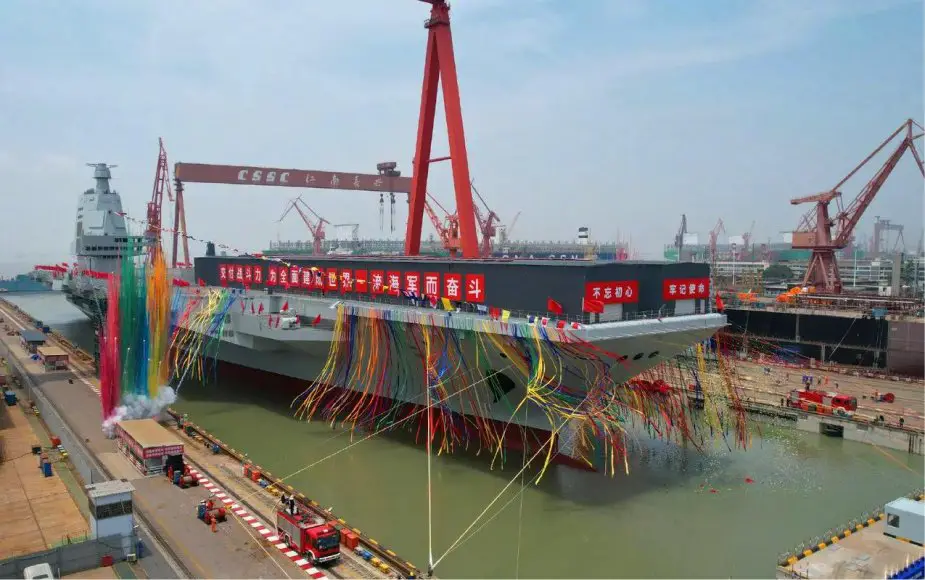Breaking news
China PLA Navy's aircraft carrier Fujian to start sea trials in 2023.
According to a tweet published by Global Times on January 2, 2023, the Chinese Navy's Type 003 aircraft carrier Fujian will focus on tests and sea trials in 2023.
Follow Navy Recognition on Google News at this link
 Chinese PLA Navy's Type 003 aircraft carrier Fujian. (Picture source: Baidu)
Chinese PLA Navy's Type 003 aircraft carrier Fujian. (Picture source: Baidu)
Fujian, named after Fujian province, is the first of the Type 003 class aircraft carrier (NATO/OSD Fujian-class CV), and is currently fitting out. Built for the People's Liberation Army Navy (PLAN), Fujian was launched on 17 June 2022 and is China’s first fixed-wing aircraft carrier with a fully indigenous design, featuring a CATOBAR system and electromagnetic catapults.
Type 003 aircraft carrier is expected to use steam turbines and electromagnetic catapults, whereas preceding Chinese carriers launched aircraft with ski jumps.
For CNS Fujian's propulsion system, its structure is still not very clear. According to Chinese military commentator Song Zhongping, the system has "integrated electric propulsion" (IEP).
The carrier's size is expected to be between the unfinished 85,000-ton Soviet aircraft carrier Ulyanovsk and the United States Navy's 100,000-ton supercarriers.
The early assessment measured the Type 003 at approximately 300 meters (984 ft 3 in) long, roughly the length of the US Navy's Gerald R. Ford-class ships.
Renewed assessment indicated that its length was 316 meters and has a flight deck with a width of 76 meters. Comparisons have also been drawn to the American Kitty Hawk-class aircraft carriers.
Earlier press reports and Chinese media generally suggested that the ship might have a displacement of around 80,000 tons to 85,000 tons. Later assessment backed by satellite images suggested the displacement was underestimated, and the Type 003 carrier might be closer in displacement to about 100,000 tons.
The third carrier will operate Shenyang J-15B variant, featuring CATOBAR launch capability, modern fifth-generation avionics, active electronically scanned array (AESA) radar, new airframes, stealth coatings, new engines with possible thrust-vectoring capability, and compatibility to launch PL-10 and PL-15 missiles.





























